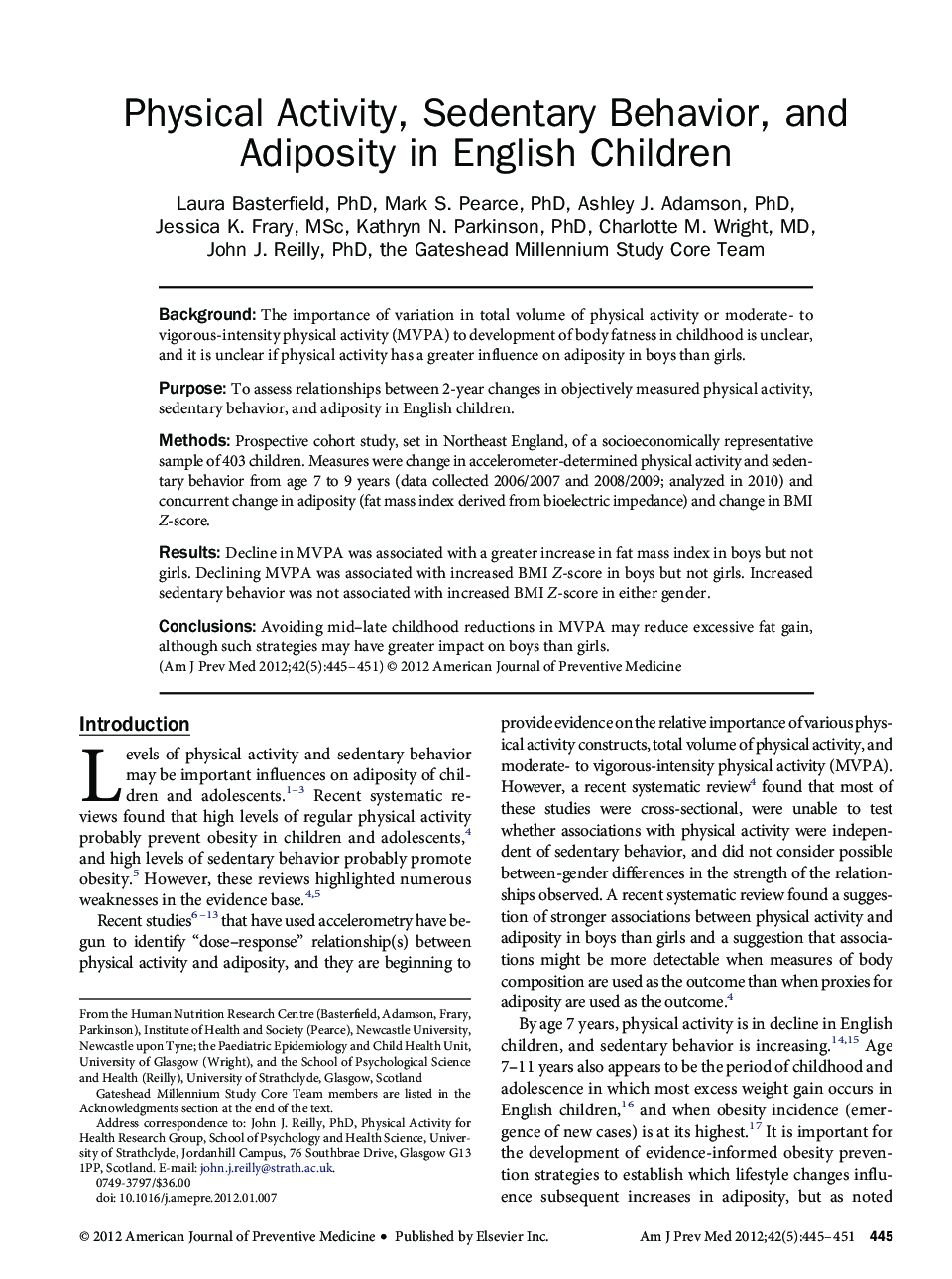| Article ID | Journal | Published Year | Pages | File Type |
|---|---|---|---|---|
| 4192550 | American Journal of Preventive Medicine | 2012 | 7 Pages |
BackgroundThe importance of variation in total volume of physical activity or moderate- to vigorous-intensity physical activity (MVPA) to development of body fatness in childhood is unclear, and it is unclear if physical activity has a greater influence on adiposity in boys than girls.PurposeTo assess relationships between 2-year changes in objectively measured physical activity, sedentary behavior, and adiposity in English children.MethodsProspective cohort study, set in Northeast England, of a socioeconomically representative sample of 403 children. Measures were change in accelerometer-determined physical activity and sedentary behavior from age 7 to 9 years (data collected 2006/2007 and 2008/2009; analyzed in 2010) and concurrent change in adiposity (fat mass index derived from bioelectric impedance) and change in BMI Z-score.ResultsDecline in MVPA was associated with a greater increase in fat mass index in boys but not girls. Declining MVPA was associated with increased BMI Z-score in boys but not girls. Increased sedentary behavior was not associated with increased BMI Z-score in either gender.ConclusionsAvoiding mid–late childhood reductions in MVPA may reduce excessive fat gain, although such strategies may have greater impact on boys than girls.
